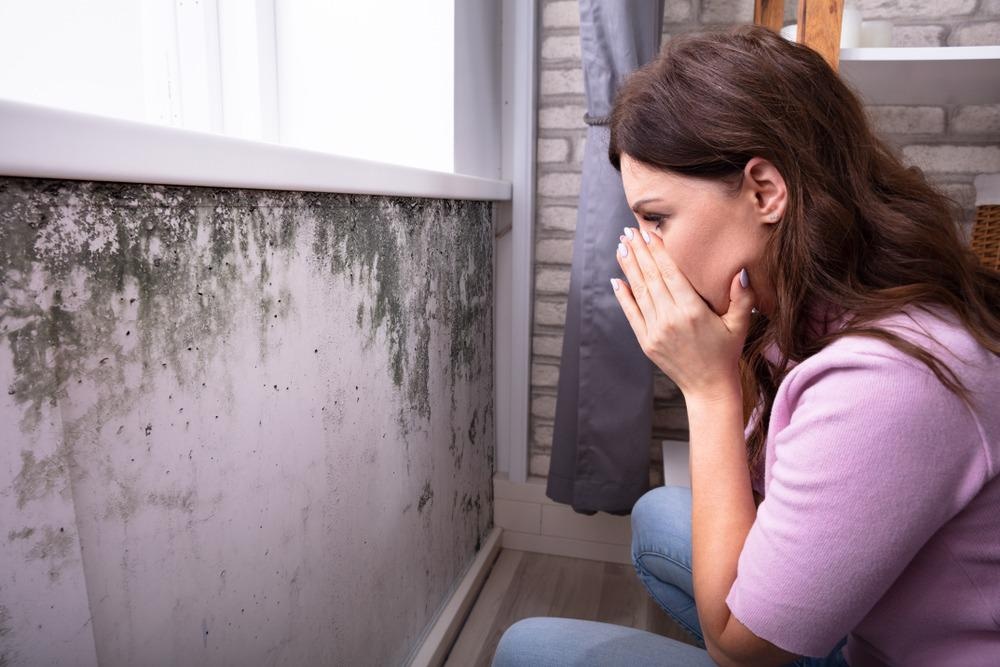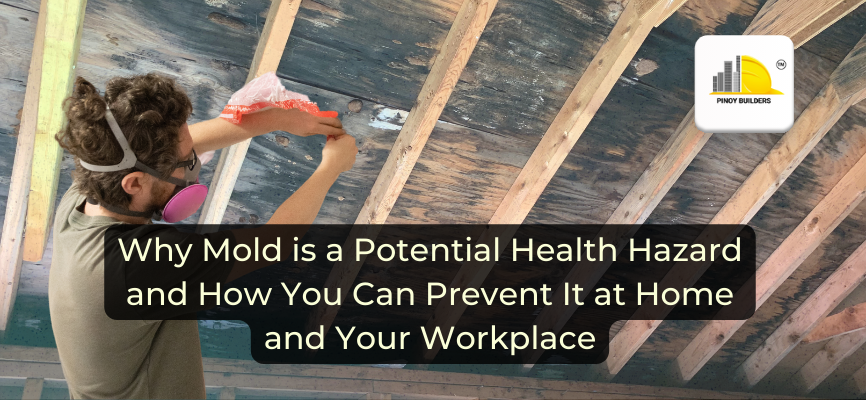Nobody likes mold. A destructive fungus that grows on damp surfaces, spoiling food, and decaying objects, mold is a common issue that can be found everywhere, like in our homes and offices. At most, it might seem like mold is a harmless aesthetic issue, but its mere presence can pose significant health risks to the people who are exposed to it.
Mold growth, sometimes referred to as mildew, comes in different shapes and colors, making it quite difficult to identify the fungal growth. Mold can look like a fuzz or a very tiny spherical growth of fur on damp or decaying surfaces, or rotting food. Although mold is natural and can be very helpful in the decomposition of natural and organic materials outdoors, mold is a health hazard indoors, especially to humans who may consume or unknowingly inhale mold particles.
Mold is a potential health hazard, and it is important to be aware of what may happen if we are exposed to it. Informing ourselves of the steps and precautions on how to prevent mold from infiltrating our spaces will also be beneficial to us in the long run. In this article, we will discuss some of the most common risks of exposure to mold, as well as what you can do to prevent this harmful fungus from growing in your living and working areas.
The Health Hazards Of Mold
A type of fungus that grows in damp and humid areas, mold produces spores that can trigger or worsen an allergic reaction, cause difficulty in breathing, and cause respiratory infections. While anybody can be negatively affected by mold spores, the possibility increases for people who have a weak immune system, or severe asthma. Other forms of mold can also produce toxins that can even cause rare health conditions such as bleeding in the lungs, although there is still contradicting research regarding this concern. Regardless, it is still important to prevent the growth of mold or mildew spots in your home or office.

In walls and other infrastructure surfaces, mold can also develop. Mostly a result of an issue with water drainage, mold growth in infrastructure surfaces can not only contribute to the decay of the building but can also be a silent health hazard if it grows and proliferates in hidden areas of the home such as corners of the walls or floors. This may result in health issues that may not be resolved for a length of time, causing skin allergies and other severe health condition symptoms that may become hard to alleviate.
Among the most serious health risks of exposure to mold is the development of mold toxicity. Mold toxicity can cause a person to develop neurological issues such as constant brain fog, issues with keeping concentration, trouble with sleep, anxiety, and even depression.
How To Prevent Mold In Your Living Or Office Area
:max_bytes(150000):strip_icc()/SPR-how-to-clean-mold-off-walls-5220421-step-04-D-0fa089a6712746ffb8629fc3823903c1.jpg)
One of the most common types of mold found indoors grows on surfaces that are damp. Commonly, mold develops where it can collect moisture in order to produce spores and propagate. It is important to keep an enclosed area well-ventilated to prevent moisture build-up that can then result in mold growth. Below are some of the other measures you can consider preventing the development of mold inside indoor spaces.
- Identify and fix leaky plumbing
- Use dehumidifiers
- Install ventilation in larger areas
- Open windows and keep air flowing in smaller spaces.
- Avoid placing furniture with foam directly against a flat surface to avoid moisture retention
- Use anti-fungal paints
Once noticed, it is also important to dispose of and clean objects and surfaces with mold. Mold can be cleaned with soap and water, or a diluted bleach solution. Make sure to keep the area dry and well-ventilated afterward to prevent the mold from growing again.
The Importance Of Preventing Mold Growth In Home and Office Spaces
Mold is not just an aesthetic issue we can cover up. It is a fungal growth that can cause serious health hazards to humans, especially to those who have health conditions and sensitivities. Removing and preventing mold growth in our living and office spaces will be beneficial to our homes and office spaces, and our health. By becoming informed about the health issues that people can experience due to exposure to mold, we can begin to protect ourselves and the surrounding people.
References:
- McIntosh, J. (20 August 2019) Is mold in your house a problem? What you need to know. Medical News Today. Retrieved from: https://www.medicalnewstoday.com/articles/288651
- Sandwood, J. (26 March 2020) Could Mold Be Affecting Your Mental Health? Mental Health Connecticut. Retrieved from: https://www.mhconn.org/mind-body-health/could-mold-be-affecting-your-mental-health/
- Indoor Environmental Quality (n.d.) The National Institute for Occupational Safety and Health (NIOSH). Retrieved from: https://www.cdc.gov/niosh/topics/indoorenv/whatismold.html
- Mould and your health (n.d) Better Health. Retrieved from: https://www.betterhealth.vic.gov.au/health/conditionsandtreatments/mould-and-your-health










